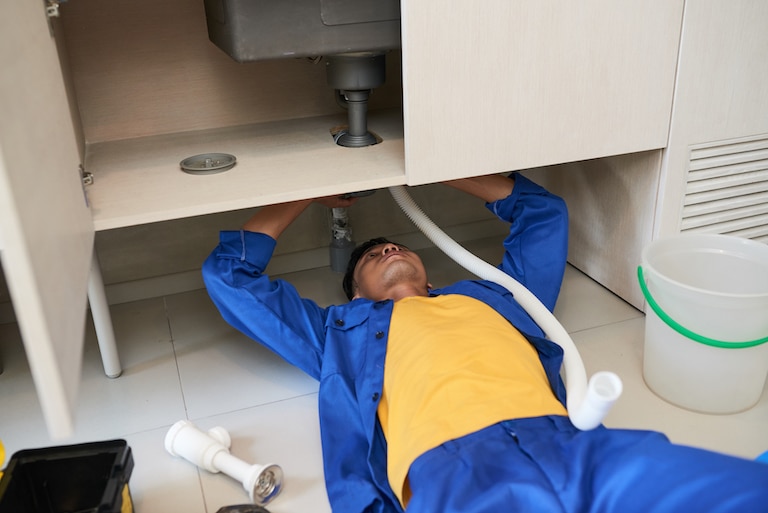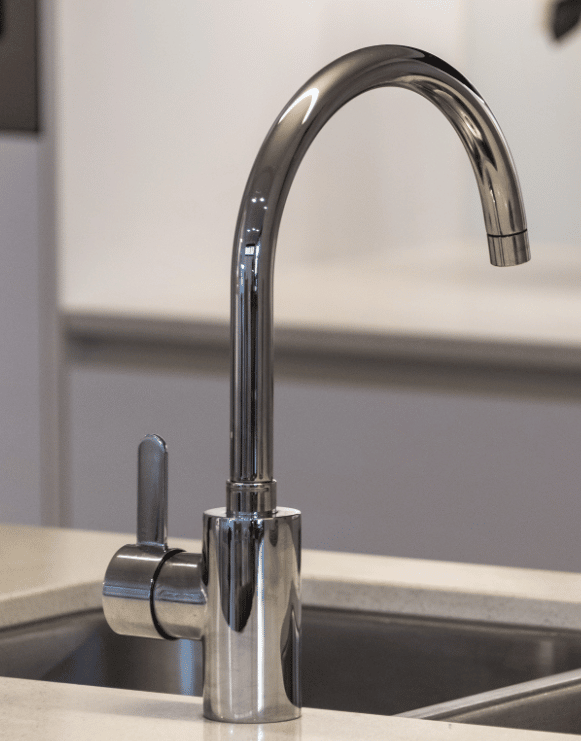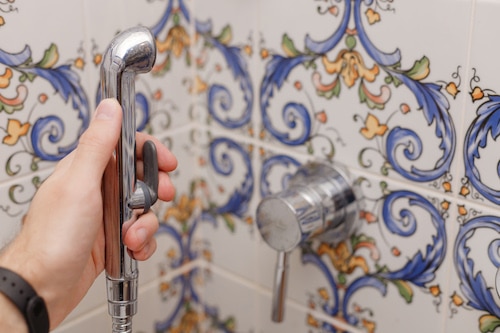How To Find A Water Leak: 9 Ways To Detect Leaking Water Problems Quickly And Easily

If you have ever had the unpleasant experience of finding water damage in your home, you know how vital it is to identify and fix the problem as quickly as possible. This article will provide you with 9 helpful tips on how to find a water leak and detect plumbing problems quickly and easily. From inspecting your walls for signs of moisture to listening carefully for strange sounds coming from pipes, these tips will help make sure that you can stay on top of any potential plumbing issues!
Introduction
If you’re like most people, you don’t think about your plumbing until something goes wrong. Then, you have to scramble to find a plumber who can fix the problem before it causes even more damage.
But what if you could avoid all of that by being proactive and finding potential water leaks before they cause problems? In this blog post, we’ll show you how to do just that.
We’ll start with a quick overview of what to look for when trying to detect a water leak. Then, we’ll give you some specific tips for finding leaks in different areas of your home or business.
By the time you finish reading this post, you’ll know how to find a water leak quickly and easily. So let’s get started!
What Causes Water Leaks?
There are many potential causes of water leaks, so it’s important to be aware of the most common ones. One of the most common causes is a faulty plumbing system. This can be due to a variety of factors, such as wear and tear, corrosion, or damage to the pipes. Another common cause is a leaky tap or shower head. These types of leaks are usually caused by worn-out washers or gaskets, and they can often be repaired quite easily. However, if the leak is coming from a pipe, it will likely require a more serious repair.
9 Ways to Detect Water Leakage Problem
If your home or business has plumbing, there is always the potential for a water leak. Water leaks can cause extensive damage to your property and lead to expensive repairs. It is important to be able to detect plumbing problems quickly and easily in order to avoid major damage.
There are several ways that you can detect plumbing problems:
- Check your water bill. If you see a sudden increase in your water bill, this could be an indication of a water leak.
- Check for wet spots on the floor or walls. If you see any wet spots, this could mean that there is a water leak somewhere in the area.
- Listen for any strange noises coming from the plumbing. Water leaks often cause pipes to make strange noises as the water flowing through them is disrupted.
- Look for any mold or mildew growth around the plumbing fixtures or in other areas of the home or business. This can be another sign of a water leak since mold and mildew need moisture to grow.
- Have a professional plumber inspect your property regularly for any signs of potential problems with the plumbing system. This is the best way to ensure that any problems are caught early and repaired before they cause extensive damage.
Looking at Your Water Meter
If you think you may have a water leak, the first thing you should do is check your water meter. If the leak is small, it may not be detectable by looking at the meter. But if the leak is large, you will see the needle on the meter moving even when no water is being used in your home.
The water meter box will have a dial or digital readout that measures how much water has been used. If the leak is large, you will see the needle on the meter moving even when no water is being used in your home.
Listening for Sounds
If you think you might have a water leak, the first step is to start listening for any unusual sounds. Many times, a water leak will create a high-pitched hissing noise as the water escapes through a small opening. If you hear this type of sound coming from your plumbing, it’s important to take action quickly to prevent any further damage. Other signs that you may have a water leak include:
- A decrease in water pressure
- The sound of running water when all appliances are turned off
- An unexplained spike in your water bill
If you suspect you have a water leak, don’t hesitate to contact a professional plumber for help. They will be able to quickly locate the source of the problem and make the necessary repairs.
Checking for Damp Spots or Water Puddles
If you think you may have a water leak, the first thing you should do is check for damp spots or water puddles. If you see any, it’s time to start investigating.
The next step is to look for signs of water damage. These can include things like peeling paint, warping wood, or mold growth. If you see any of these signs, there’s a good chance you have a water leak.
Once you’ve determined that there is a water leak, the next step is to find the source of the leak. This can be tricky, but there are a few methods that can help. One way is to follow the sound of running water. Another is to look for areas where the ground is soggy or has standing water.
If you suspect that the leak is coming from a plumbing fixture, such as a toilet or sink, try turning off the water to that fixture and see if the leak stops. If it does, then you know you’ve found the source of the problem.
Once you’ve located the source of the leak, it’s time to fix it. Depending on the severity of the leak, this could be something as simple as tightening a loose connection or replacing a washer. If the leak is more serious, though, you may need to call in a professional plumber.
Inspecting the Walls and Floors
If you think there may be a water leak in your home, the first step is to inspect the walls and floors. Look for any signs of water damage, such as staining, warping, or mold. If you see any of these signs, it’s important to investigate further to determine whether there is an active leak.
To check for an active leak, start by checking all visible plumbing fixtures for any sign of dripping or leaks. Pay close attention to taps, toilets, showers, and sinks. If you don’t see any leaks at these fixtures, move on to checking the pipes behind them.
Once you’ve checked all of the visible plumbing in your home, it’s time to move on to checking the hidden pipes. The best way to do this is with a moisture meter. A moisture meter will help you pinpoint the location of a leak by detecting moisture in the air or in building materials.
If you think you’ve found a water leak, the next step is to call a plumber so they can repair the problem and prevent further damage to your home.
Checking the Pipes
The first step in finding a water leak is to check the pipes. This can be done by inspecting the outside of the pipes for any leaks or cracks. If you see any, it’s important to have them repaired as soon as possible to prevent further damage.
Another way to check for leaks is to listen for any strange noises coming from the pipes. If you hear anything out of the ordinary, it could be an indication of a problem.
If you suspect there may be a leak but can’t find any visible signs, there are a few other things you can do. One is to turn off all the water in your home and then check your water meter. If it’s still moving, that means there’s water leaking somewhere.
You can also try using a leak detection device, which are available at most hardware stores. These devices emit a sound when they come in contact with water, so they can help you pinpoint the exact location of the leak.
Looking Around Appliances and Fixtures
If you’re like most homeowners, you probably don’t think about your plumbing until something goes wrong. But if you take the time to learn about your home’s plumbing and how it works, you’ll be able to spot potential problems before they become major issues.
One of the first places to look for a water leak is around appliances and fixtures. Check for any drips or puddles of water that might indicate a slow or steady leak. Also, look for any water stains on ceilings or walls near appliances or fixtures. These could be signs of a hidden leak.
Examining the Ceiling or Loft
If you suspect a water leak, one of the first places you should check is your ceiling or loft. If you have an unfinished loft, this will be easy to do. Simply go into the loft and look for any signs of water damage, such as water stains on the wood or insulation. If you have a finished loft, you may need to remove some of the drywall or panelling to check for water damage.
If you do find water damage in your ceiling or loft, it’s important to determine where the water is coming from. This can be tricky, as leaks can often travel through ceilings and walls before they show up in your loft. But, if you take your time and carefully inspect the area, you should be able to identify the source of the leak.
Checking Your Water Bill
If your monthly water bill seems unusually high, there’s a chance you may have a water leak. Checking your water bill is one of the quickest and easiest ways to detect plumbing problems. Here’s what you need to do:
- Take a look at your most recent water bill and compare it to previous bills. If you see a significant increase in your water usage, that’s a red flag that you may have a leak.
- Contact your local water utility company and ask them to check for any leaks on their end. They may be able to tell you if there are any leaks in your home’s main water line.
- Inspect your home’s plumbing fixtures and appliances for any signs of leaks. Check under sinks, in cabinets, around toilets, and near any exposed pipes or fittings.
If you suspect you have a water leak, don’t wait to get it checked out. Ignoring a leak can lead to costly repairs down the road. By taking care of the problem now, you can save yourself time, money, and headaches in the future.
Using Thermal Imaging
Thermal imaging can be a helpful tool to find a water leak. Thermal imaging cameras can detect temperature differences on surfaces, which can help you find leaks in your plumbing. Here’s how to use thermal imaging to find a water leak:
- Get a thermal imaging camera. You can find these online or at some hardware stores.
- Turn off all the sources of heat in your home, including any fans. You want to create as big of a temperature difference as possible between the leak and the surrounding area.
- Take a look around your home with the camera, paying attention to areas where there might be leaks (such as behind toilets, under sinks, etc.). The camera will show you any areas that are significantly warmer or cooler than the surrounding area. These could be potential leaks.
- Once you’ve found a potential leak, you can use another tool (such as a moisture meter) to confirm that there is indeed water present. Then you can repair the leak and avoid costly damage to your home.
Conclusion
Detecting a water leak takes some patience and detective work, but with the right steps and tools you can find the source of your plumbing problem quickly and easily. By following our 9 tips to detect a water leak, you will be able to save time and money by finding the cause of your leaking pipes before they become too serious. The sooner you start detecting potential leaks in your home’s plumbing system, the more stress-free it will be when something does happen.
Plumbing problems can be a real pain, but luckily they don’t have to be. By following the steps above and being aware of potential signs of a water leak, you should be able to quickly and easily find any plumbing problem in your home. Whether it’s a major or minor issue, getting it fixed right away will save you both time and money. So don’t put off dealing with your plumbing issues – take action today!
Seek professional plumbing assistance for your water leak problem
If you require professional help for repairing your water leak problem or if you have a plumbing emergency, please call Normz Plumbing at 01933 384 684 or contact us via email or contact form here.
You can also get in touch with us via Facebook or Instagram: @normz.plumbing
Normz Plumbing & Heating Services has years of experience installing and repairing plumbing problems for homes and businesses throughout Northamptonshire including:
We also provide complete Bathroom Renovation and Kitchen Fitting service.
Recent Post
Is Your Kitchen Tap Making You Sick? The Hidden Dangers of Germs!
Is Your Kitchen Tap Making You Sick? The Hidden Dangers…
How To Find A Water Leak: 9 Ways To Detect Leaking Water Problems Quickly And Easily
How To Find A Water Leak: 9 Ways To Detect…
What Clients Think About Us?
We guarantee your satisfaction with any plumbing service we provide. If you’re not happy, we’ll return to you and fix it exactly to your satisfaction.


